#secker & warburg
Text
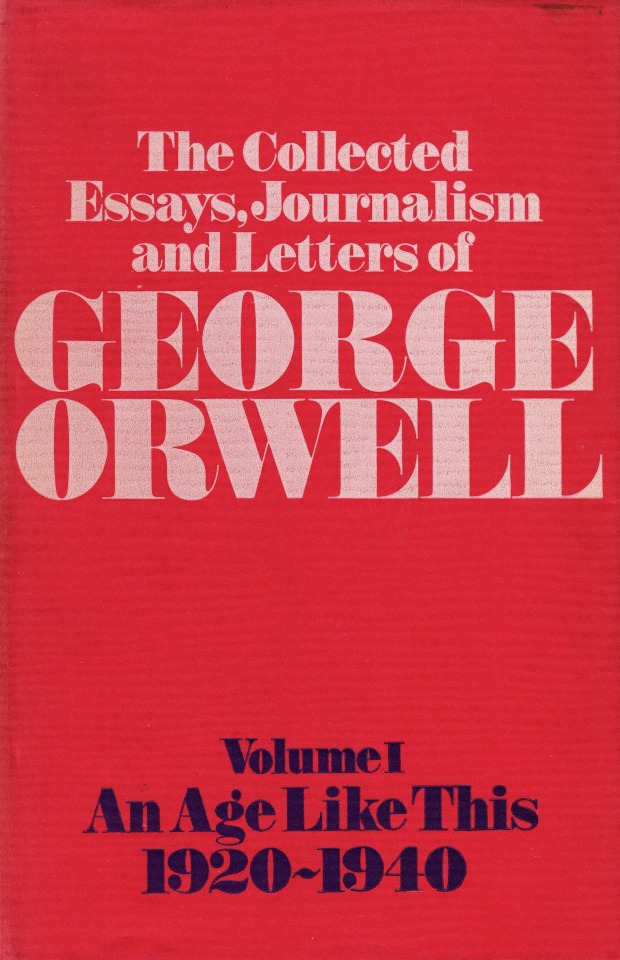
The Collected Essays, Journalism and Letters of George Orwell, Volume I: An Age Like This, 1920-1940 (1968)
George Orwell
Secker & Warburg
#The Collected Essays Journalism and Letters of George Orwell#An Age Like This#George Orwell#Secker & Warburg#Started This Today
10 notes
·
View notes
Photo
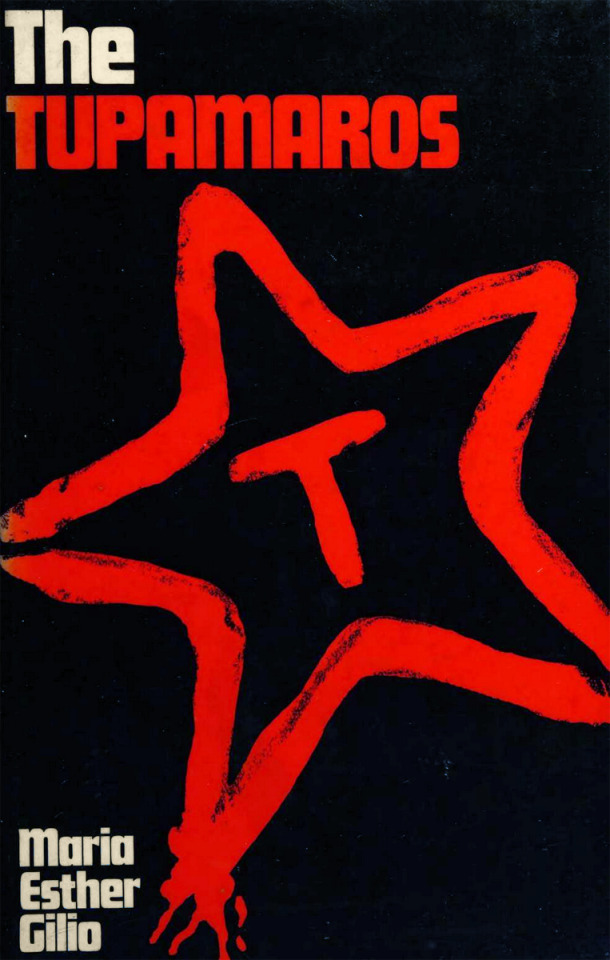

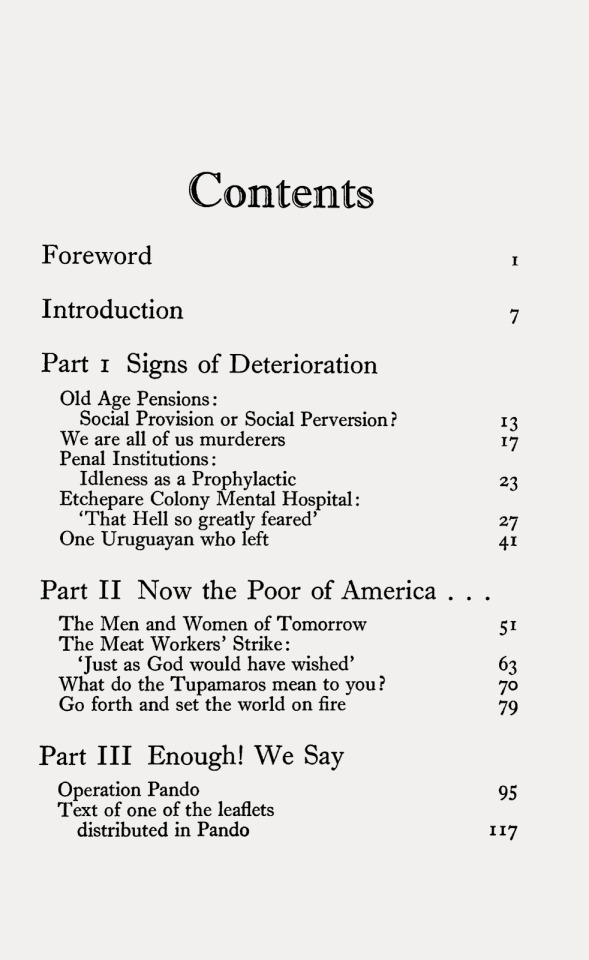
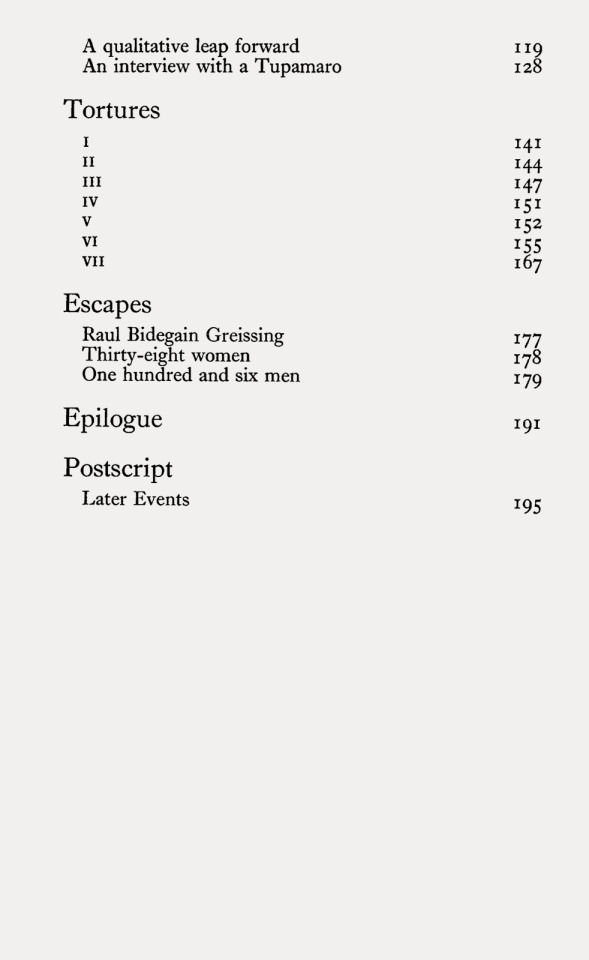
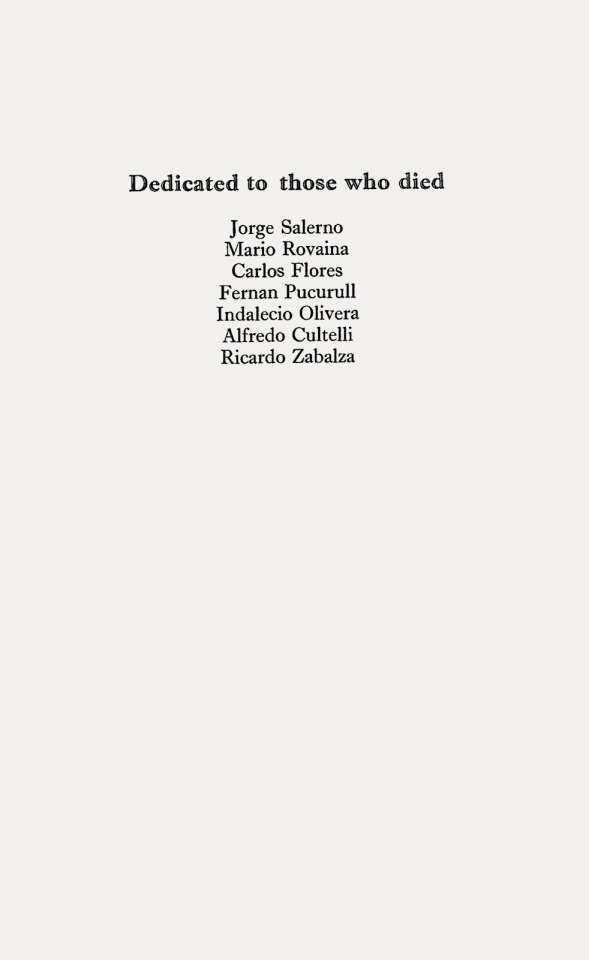
María Esther Gilio, (1970), The Tupamaros, Translated from the Spanish by Anne Edmondson, Jacket Design by Philip Mann, Secker & Warburg, London, 1972 [plus: María Esther Gilio, (1970), The Tupamaro Guerrillas, Translated by Anne Edmondson, Introduction by Robert J. Alexander, Saturday Review Press, New York, NY, 1972]
#graphic design#book#cover#book cover#maría esther gilio#tupamaros#movimiento de liberación nacional tupamaros#mln t#jorge salerno#mario robaina#mario robaina méndez#carlos flores#fernán pucurull#alfredo cultelli#ricardo zabalza#indalecio olivera#anne edmondson#philip mann#robert j. alexander#secker & warburg#saturday review press#1970s
12 notes
·
View notes
Text

Footnotes - Part 2
[80] Graham Kemp and Douglas P. Fry (eds.), Keeping the Peace: Conflict Resolution and Peaceful Societies around the World, New York: Routledge, 2004, p. 163.
[81] All quotes and statistics on the Navajo come from Dennis Sullivan and Larry Tifft, Restorative Justice: Healing the Foundations of Our Everyday Lives, Monsey, NY: Willow Tree Press, 2001, pp. 53–59.
[82] www.harmfreezone.org (viewed November 24, 2006)
[83] Philly’s Pissed, www.phillyspissed.net [Viewed May 20, 2008]
[84] George R. Edison, MD, “The Drug Laws: Are They Effective and Safe?” The Journal of the American Medial Association. Vol. 239 No.24, June 16, 1978. A.W. MacLeod, Recidivism: a Deficiency Disease, Philadelphia: University of Pennsylvania Press, 1965.
[85] Jamie Bissonette, When the Prisoners Ran Walpole: A True Story in the Movement for Prison Abolition, Cambridge: South End Press, 2008, p. 201. Also consider the stories of John Boone and other bureaucrats presented in this story.
[86] Some mainstream sources still contest that the Makhnovists were behind anti-Semitic pogroms in Ukraine. In Nestor Makhno, Anarchy’s Cossack, Alexandre Skirda traces this claim to its roots in anti-Makhno propaganda, while citing unfriendly contemporary sources who acknowledged that the Makhnovists were the only military units not carrying out pogroms. He also references propaganda put out by the Makhnovists attacking anti-Semitism as a tool of the aristocracy, Jewish militias that fought among the Makhnovists, and actions against pogromists personally carried out by Makhno.
[87] Paul Avrich, The Russian Anarchists, Oakland: AK Press, 2005, p. 218.
[88] Makhno hoped that Lenin and Trotsky were motivated by a personal vendetta against him rather than an absolute desire to crush the free soviets, and would call off the repression if he left.
[89] Alexandre Skirda, Nestor Makhno, Anarchy’s Cossack: The Struggle for Free Soviets in the Ukraine 1917–1921, London: AK Press, 2005, p. 314.
[90] Amy Goodman, “Lakota Indians Declare Sovereignty from US Government,” Democracy Now!, December 26, 2007.
[91] From an anonymous illustrated pamphlet, “The ‘Oka Crisis’ ”
[92] Oscar Olivera, Cochabamba! Water War in Bolivia, Cambridge: South End Press, 2004.
[93] George Katsiaficas, The Subversion of Politics: European Autonomous Social Movements and the Decolonization of Everyday Life. Oakland: AK Press, 2006, p. 123
[94] Jaime Semprun, Apología por la Insurrección Argelina, Bilbao: Muturreko Burutazioak, 2002, p.34 (translated from French to Spanish by Javier Rodriguez Hidalgo; the translation to English is my own). The quotes in the next paragraphs are from p.18 and p.20.
[95] Jaime Semprun, Apología por la Insurrección Argelina, Bilbao: Muturreko Burutazioak, 2002, pp.73–74 (translated from French to Spanish by Javier Rodriguez Hidalgo; the translation to English is my own).
[96] Ditto, p.80 . Regarding the fourth point, in contrast to Western society and its various forms of pacifism, the peacefulness of the movement in Algeria does not preclude self-defense or even armed uprising, as evidenced by the preceding point regarding the martyrs. Rather, peacefulness indicates a preference for peaceful and consensual outcomes over coercion and arbitrary authority.
[97] Ditto, p.26.
[98] George Orwell, Homage to Catalonia, London: Martin Secker & Warburg Ltd., 1938, pp.26–28.
[99] There were 40,000 armed anarchist militants in Barcelona and the surrounding region alone. The Catalan government would have been effectively abolished had the CNT simply ignored it, rather than entering into negotiations. Stuart Christie, We, the Anarchists! A study of the Iberian Anarchist Federation (FAI) 1927–1937, Hastings, UK: The Meltzer Press, 2000, p. 106.
[100] Ditto, p. 101
[101] John Jordan and Jennifer Whitney, Que Se Vayan Todos: Argentina’s Popular Rebellion, Montreal: Kersplebedeb, 2003, p. 56.
[102] Natasha Gordon and Paul Chatterton, Taking Back Control: A Journey through Argentina’s Popular Uprising, Leeds (UK): University of Leeds, 2004.
[103] John Jordan and Jennifer Whitney, Que Se Vayan Todos: Argentina’s Popular Rebellion, Montreal: Kersplebedeb, 2003, p. 9.
[104] George Katsiaficas, “Comparing the Paris Commune and the Kwangju Uprising,” www.eroseffect.com. That the resistance was “well-organized” comes from a report from the conservative Heritage Foundation, Daryl M. Plunk’s “South Korea’s Kwangju Incident Revisited,” The Heritage Foundation, No. 35, September 16, 1985.
[105] Goods produced in environmentally friendly ways, by workers who receive a living wage in healthier labor conditions.
[106] Sam Dolgoff, The Anarchist Collectives, New York: Free Life Editions, 1974, p. 71.
[107] David Graeber, Fragments of an Anarchist Anthropology, Chicago: Prickly Paradigm Press, 2004, pp. 54–55.
[108] John Jordan and Jennifer Whitney, Que Se Vayan Todos: Argentina’s Popular Rebellion, Montreal: Kersplebedeb, 2003, pp. 42–52.
[109] Ditto, pp. 43–44.
[110] Diana Denham and C.A.S.A. Collective (eds.), Teaching Rebellion: Stories from the Grassroots Mobilization in Oaxaca, Oakland: PM Press, 2008, interview with Yescka.
[111] Ditto, interview with Leyla.
[112] “Longo Maï,” Buiten de Orde, Summer 2008, p.38. My own translation.
[113] Natasha Gordon and Paul Chatterton, Taking Back Control: A Journey through Argentina’s Popular Uprising, Leeds (UK): University of Leeds, 2004.
[114] For those who cannot read French or Spanish, in 2004 Firestarter Press put out a good zine about this insurrection, called “You Cannot Kill Us, We Are Already Dead.” Algeria’s Ongoing Popular Uprising.
[115] Paul Avrich, The Russian Anarchists, Oakland: AK Press, p. 212–213.
[116] Harold Barclay, People Without Government: An Anthropology of Anarchy, London: Kahn and Averill, 1982, p. 57.
[117] “Pirate Utopias,” Do or Die, No. 8, 1999, pp. 63–78.
[118] To name just one example, “humanitarian” UN missions have been caught repeatedly setting up sex trafficking rings in the countries where they are stationed for peacekeeping. “But the problem goes beyond Kosovo and sex trafficking. Wherever the UN has established operations in recent years, various violations of women seem to follow.” Michael J. Jordan, “Sex Charges haunt UN forces,” Christian Science Monitor, 26 November 2004. What the mainstream press cannot go so far as to admit is that this reality is universal to militaries, whether they wear blue helmets or not.
[119] “About RAWA,” www.rawa.org Viewed June 22, 2007
[120] See the citation of van der Dennen and Rappaport in Chapter 1.
[121] Harold Barclay, People Without Government: An Anthropology of Anarchy, London: Kahn and Averill, 1982, p. 122.
[122] Haudennosaunne oral traditions always maintained this early date, but racist white anthropologists discounted this claim and estimated the league began in the 1500s. Some even hypothesized that the Five Nations constitution was written with European help. But recent archaeological evidence and the record of a coinciding solar eclipse backed up the oral histories, proving that the federation was their own invention. Wikipedia, “The Iroquois League,” http: //en.wikipedia.org/wiki/Iroquois_League Viewed 22 June 2007
[123] Stephen Arthur, “Where License Reigns With All Impunity:” An Anarchist Study of the Rotinonshón:ni Polity,” Northeastern Anarchist No. 12, Winter 2007 nefac.net
[124] See, for example, Dmitri M. Bondarenko and Andrey V. Korotayev, Civilizational Models of Politogenesis, Moscow: Russian Academy of Sciences, 2000.
[125] The argument that certain societies were able to take over the world because of geographic conditions rather than any inherent superiority is skillfully presented by Jared Diamond in Guns, Germs, and Steel: The Fates of Human Societies. New York: W.W. Norton, 1997.
8 notes
·
View notes
Photo
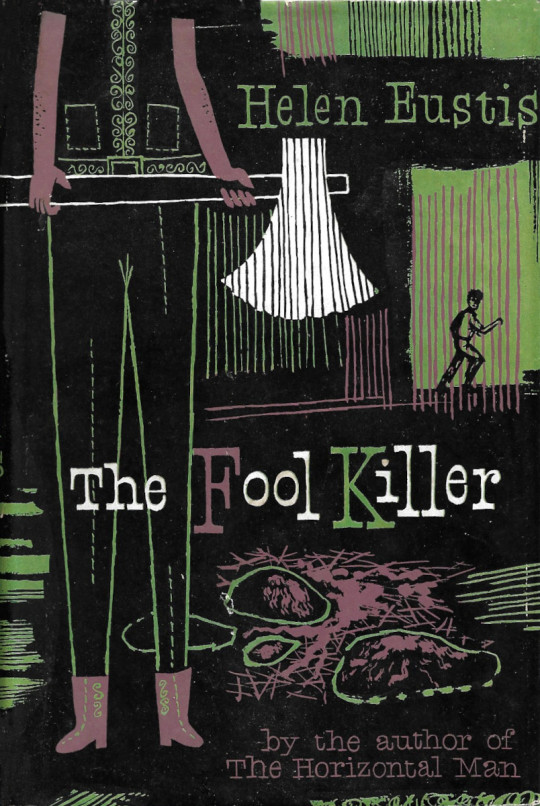
The Fool Killer, by Helen Eustis (Secker & Warburg, 1953).
From eBay.
17 notes
·
View notes
Text
Julia was twenty-six years old... and she worked, as he had guessed, on the novel-writing machines in the Fiction Department. She enjoyed her work, which consisted chiefly in running and servicing a powerful but tricky electric motor... She could describe the whole process of composing a novel, from the general directive issued by the Planning Committee down to the final touching-up by the Rewrite Squad. But she was not interested in the final product. She "didn't much care for reading," she said. Books were just a commodity that had to be produced, like jam or bootlaces.
From 1984 (Nineteen Eighty-Four),
by George Orwell.
Published by Secker & Warburg in 1948
Additional resources -
#nineteen eighty four#george orwell#AI#novel writing machine#books#fiction department#commodity#ChatGPT
18 notes
·
View notes
Photo
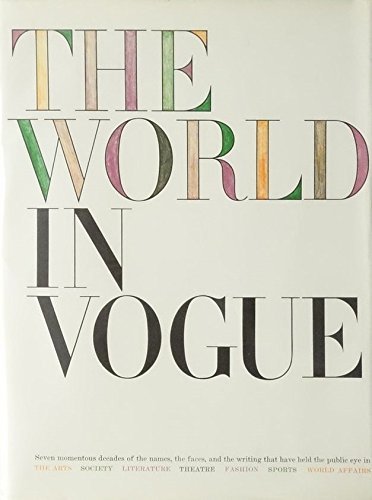
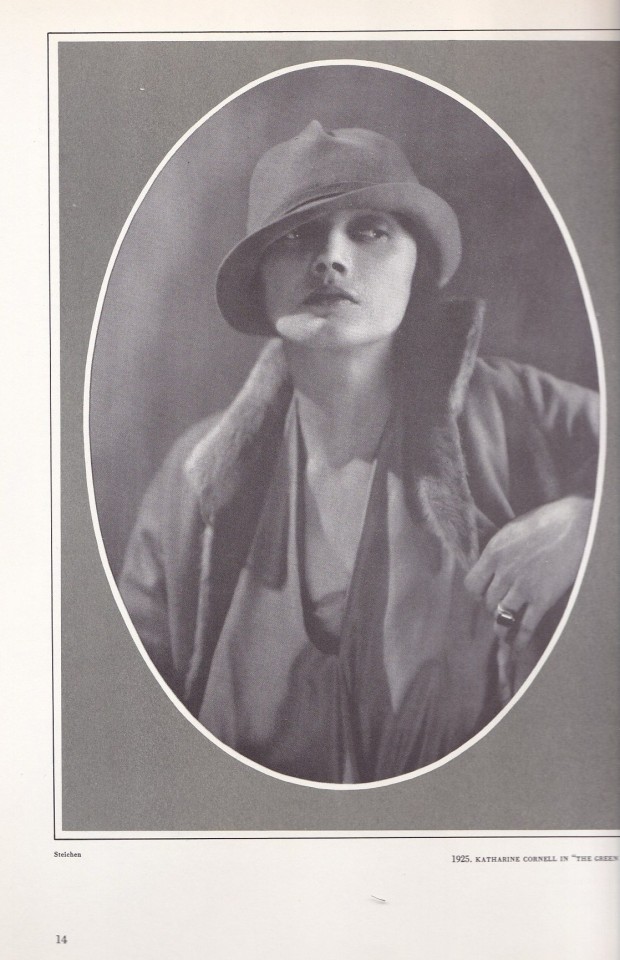

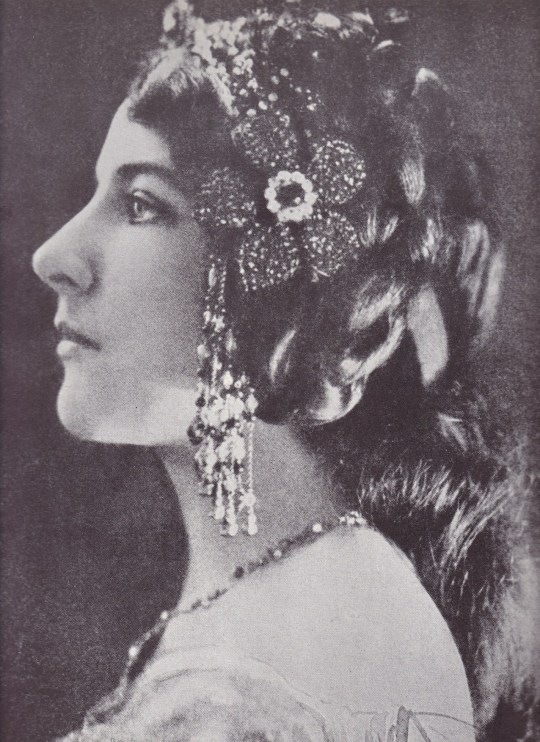
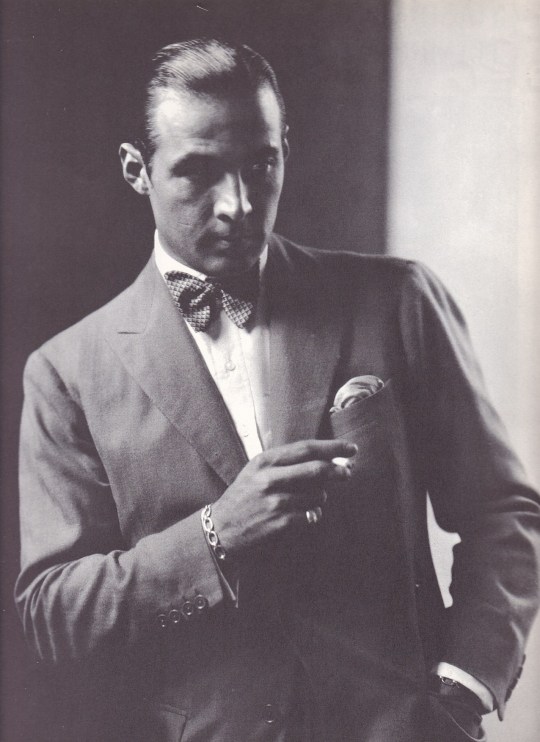
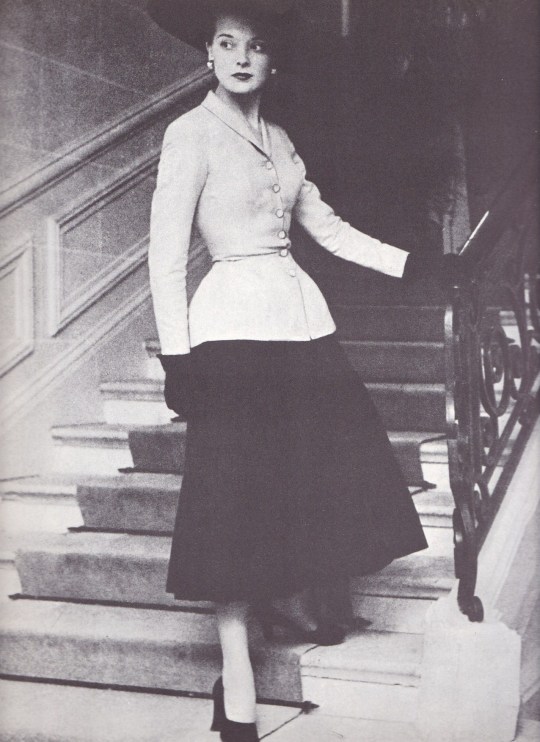

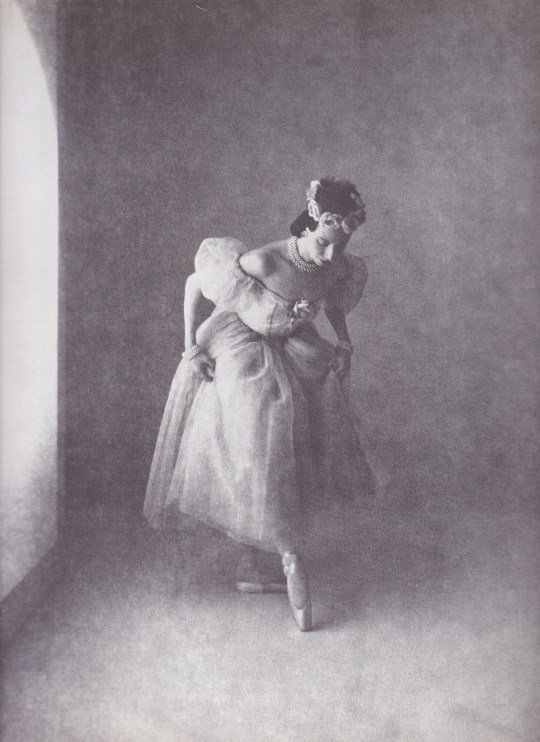
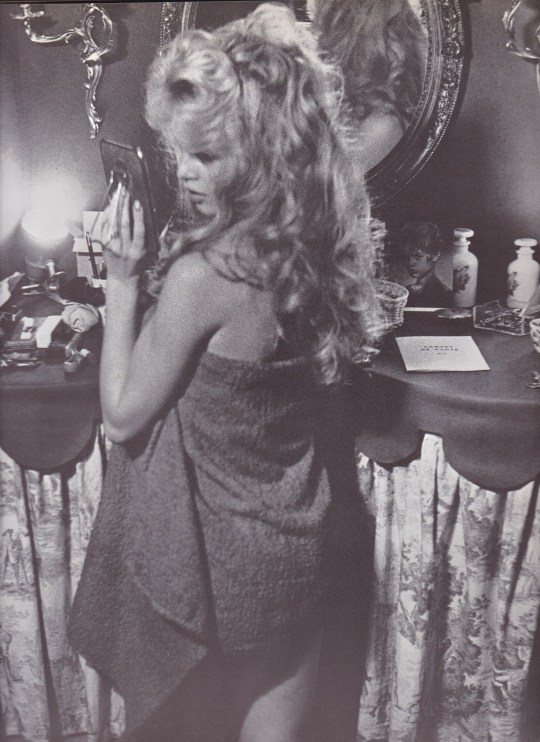

The World in Vogue
Seven momentous decades of the namnes, the faces, and the writing that have held the public eye in The Arts Society Literature Theatre Fashion Sports Worls Affairs
Secker & Warburg, London 1963, 416 pages, 25 x 33 cm.,
euro 90,00
email if you want to buy [email protected]
A stunning collection of 300 photographs of some of the most celebrated actors, artists, models, First Ladies, and social figures from around the world, drawing on stories from the pages of Vogue as well as never-before-published images by iconic photographers.
These trendsetters and newsmakers are captured by such famous photographers as Cecil Beaton, Jonathan Becker, Eric Boman, Horst P. Horst, Edward Steichen, Irving Penn, Richard Avedon, François Halard, Helmut Newton, Stephen Meisel, Snowdon, Toni Frissell, Bruce Weber, Herb Ritts, and Annie Leibovitz. Not only did these photographers take dazzling portraits—in studios or on location—that caught these iconic figures in classic, playful, or dramatic moments but they also documented their parties, weddings, houses, and gardens. Writers like Hamish Bowles, Paul Rudnick, Truman Capote, Francis Wyndham, Jeffrey Steingarten, Joan Juliet Buck, William Norwich, Gloria Steinem, Georgina Howell, Vicki Woods, Marina Rust, Michael Specter, and Jonathan Van Meter tell you the stories behind these figures and events.
Here are the glamorous weddings of Plum Sykes in Yorkshire, Lauren Davis in Cartagena, and Minnie Cushing in Newport; Truman Capote writing about cruising the Yugoslavian coast with Lee Radziwill, Luciana Pignatelli, and the Agnellis; gardens from East Hampton to Corfu designed by landscape architect Miranda Brooks; Inès de La Fressange’s apartment in Paris; Gloria Steinem reporting on the 540 masked partygoers at the Black and White Ball Truman Capote threw for Katharine Graham at the Plaza hotel; the gardens of Valentino’s seventeenth-century Château de Wideville, outside Paris; the designers, the best-dressed, and the stars at the annual Costume Institute party at the Metropolitan Museum; Mick Jagger and his family in Mustique; Jacqueline Kennedy and Michelle Obama; Kate Moss, Madonna, Angelina Jolie, Cate Blanchett, Ali MacGraw, Anjelica Huston, Nicole Kidman, Cher, Iman and David Bowie, Penélope Cruz, Charlotte Rampling, and many more.
Richly illustrated in black-and-white and color, The World in Vogue: People, Parties, Places is a stunning look at portraits, houses, gardens, and parties of celebrated figures from many worlds.
01/07/22
orders to: [email protected]
ordini a: [email protected]
twitter: @fashionbooksmi
instagram: fashionbooksmilano, designbooksmilano tumblr: fashionbooksmilano, designbooksmilano
#World in Vogue#actors#artists#models#First Ladies#social figures#Cceil Beaton#Hors#Steichen#Irving Penn#Avedon#Helmut <newton#Bruce Weber#Herbs Ritts#photography books#fashion books#fashionbooksmilano
21 notes
·
View notes
Text
1984 George Orwell Summary
1984 Book Summary, Nineteen Eighty Four is a dystopian social science fiction novel and cautionary tale by English writer George Orwell. It was published on 8 June 1949 by Secker & Warburg as Orwell's ninth and final book completed in his lifetime.
https://www.readbooksummary.com/2023/05/1984-george-orwell-summary.html
0 notes
Text
Nineteen Eighty-Four - Wikipedia
Nineteen Eighty-Four (also published as 1984) is a dystopian novel and cautionary tale by English writer George Orwell. It was published on 8 June 1949 by Secker & Warburg as Orwell's ninth and final book completed in his lifetime.
Thematically, it centres on the consequences of totalitarianism, mass surveillance and repressive regimentation of people and behaviours within society.
[2][3] Orwell, a democratic socialist, modelled the authoritarian state in the novel on the Soviet Union in the era of Stalinism, and Nazi Germany.[4] More broadly, the novel examines the role of truth and facts within societies and the ways in which they can be manipulated.
0 notes
Text

༅༅༅༅༅༅༅༅
It slipped swiftly over the invisible, swarming presence of the immense nothing lying beneath its vault.
༅༅༅༅༅༅༅༅
A That About Sums It Up Series. A post revolving door of glass and mahogony take on the idea that is Paris. One hundred percent made from bits of Il Conformista by Alberto Moravia, circa 1951, who also authored: Conjugal Love; The Time Of Indifference; and Roman Tales. Found in a 1958 hardcover edition of The Conformist pubished by Secker & Warburg, London, with an English translation by Angus Davidson. The above photo by Jivananda Candrāmā (James FitzGerald) was archived by name and posted prior. -Jivananda (Jim)
0 notes
Photo

Ainslie Skinner - Mind's Eye - Secker & Warburg - 1980
16 notes
·
View notes
Text
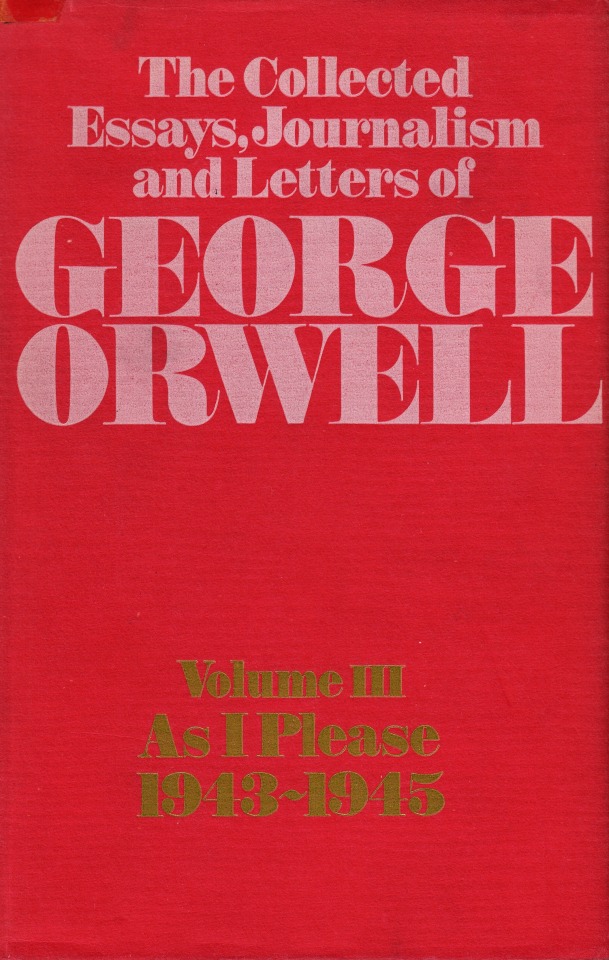
The Collected Essays, Journalism and Letters of George Orwell, Volume III: As I Please, 1943-1945 (1968)
George Orwell
Secker & Warburg
#The Collected Essays Journalism and Letters of George Orwell#As I Please#George Orwell#Secker & Warburg#Started This Today
0 notes
Text
Book Review: Nineteen Eighty-Four by George Orwell
Book Review: Nineteen Eighty-Four by George Orwell
#ReadingCommunity #ReaderCommunity #Reader #Reading #Orwell #ScienceFiction #Dystopian #1984 #NineteenEightyFour #Orwellian
Hi everyone! I hope you’re all well. Today is Friday, and time for another review. Today, I am reviewing the classic Nineteen Eighty-Four by George Orwell.
Nineteen Eighty-Four by George Orwell was initially published in June 1949 by Secker & Warburg and (my copy) is 358 pages long.
The PlotThe story follows Winston Smith as he navigates life in the totalitarian state of Oceania, where…

View On WordPress
#1984#book review#Dystopian#Nineteen Eighty-Four#Orwell#reader#science fiction#Scifi#Totalitarianism
0 notes
Text

populist conspiracy theories about a New World
Order not only had been embraced by many seekers of stigmatized knowledge but also had seeped into popular culture, thereby indugurating a period during the late 20th and early 21st centuries in the United States where people have been actively preparing for apocalyptic millenarian scenarios. [4][6] Those political scientists are concerned that mass hysteria over New World Order conspiracy theories could eventually have devastating effects on American political life, ranging from escalating lone-wolf terrorism to the rise to power of authoritarian ultranationalist demagogues.[4][6][9] The New World Order is a non-fiction book written by H.G. Wells and was published by Secker & Warburg in January
1940. In The New World Order, Wells proposed a framework of international functionalism that could guide the world towards achieving world peace. [1] To achieve these ends, Wells asserted that a socialist and scientifically planned world government would need to be formed to defend human rights. [2] Wells's motivation for writing The New World Order was based upon the outbreak of World War II. [3] Wells was concerned that the Allies had no clear statement of aims for fighting in the war and that this would lead to the continuation of the pre-existing balance of power. [4] In The New World Order, Wells writes that without as CLONES
1 note
·
View note
Text
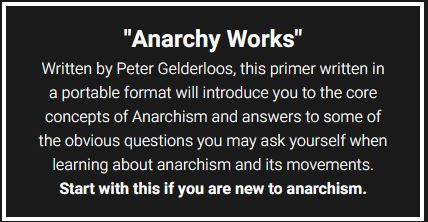
Chapter 6. Revolution
Recommended Reading
Dee Brown, Bury My Heart at Wounded Knee, New York: Holt, Rinehart & Winston, 1970.
David Dixon, Never Come to Peace Again: Pontiac’s Uprising and the Fate of the British Empire in North America. Norman: University of Oklahoma Press, 2005.
Diana Denham and C.A.S.A. Collective (eds.), Teaching Rebellion: Stories from the Grassroots Mobilization in Oaxaca, Oakland: PM Press, 2008.
Alexandre Skirda, Nestor Makhno, Anarchy’s Cossack: The Struggle for Free Soviets in the Ukraine 1917–1921, London: AK Press, 2005.
Alfredo Bonanno, From Riot to Insurrection: analysis for an anarchist perspective against post industrial capitalism. London: Elephant Editions, 1988.
John Jordan and Jennifer Whitney, Que Se Vayan Todos: Argentina’s Popular Rebellion, Montreal: Kersplebedeb, 2003.
Jaime Semprun, Apologie pour l’Insurrection Algérienne, Paris: Editions de L’Encyclopédie des Nuisances, 2001.[114]
George Orwell, Homage to Catalonia, London: Martin Secker & Warburg Ltd., 1938.
George Katsiaficas, The Subversion of Politics: European Autonomous Social Movements and the Decolonization of Everyday Life. Oakland: AK Press, 2006.
A.G. Grauwacke, Autonome in Bewegung, Berlin: Assoziation A, 2008.
Leanne Simpson, ed. Lighting the Eighth Fire: The Liberation, Resurgence, and Protection of Indigenous Nations, Winnipeg: Arbeiter Ring, 2008.
A.G. Schwarz, Tasos Sagris, and Void Network, eds. We Are an Image from the Future: The Greek Revolts of December 2008. Oakland: AK Press, 2010.
#book lists#book recs#book recommendations#recommended reading#organization#revolution#anarchism#daily posts#communism#anti capitalist#anti capitalism#late stage capitalism#anarchy#anarchists#libraries#leftism#social issues#economy#economics#climate change#anarchy works#environmentalism#environment#solarpunk#anti colonialism#acab
3 notes
·
View notes
Text
“Why I Write” by George Orwell
Orwell discusses the reasons why he writes. He breaks it down to four reasons: sheer egoism, aesthetic enthusiasm, historical impulse, and political purpose. Each of these four reasons for writers deciding to write may correspond in some way to the deaths authors may face. After all, if an author’s ego becomes too bloated that it overshadows the work, they may face death number three. If they write something for pure aesthetic purposes that could perhaps be too full of purple prose or dense description, their writing may eventually fade. Their political writing may win them lauds and jeers alike, causing them to be placed on a pedestal they may topple from at a later date or to be burned in effigy, once again facing death number three. Regardless, whatever their meanings and intentions when first publishing, whichever reason they originally chose may be lost within the reader’s interpretation. Orwell’s essay includes personal backstory that explores how his childhood and the era he lived in shaped what he wrote and why he wrote it. Orwell is often most known for 1984 and Animal Farm, two novels that are still widely read (and banned) today, with much of the text being twisted for whatever political agenda fits it today. One may argue that he has faced death number two (that once published, the audience gains control over the text’s interpretation) more than the others (excluding physical death itself). His essay provides the writer’s perspective, rather than that of the literary critic or theorist, thus providing insight into how writers approach their own writing processes. Most intriguing, in some regards, is how fresh it reads for 2022 and how Orwell’s fierce stance for socialist democracy over authoritarianism remains relevant in today’s climate.
Orwell, George. “Why I Write.” Collected Essays, Journalism and Letters of George Orwell, vol. 1, Sonia Orwell and Ian Angus (eds.). Secker and Warburg, London, 1968.
1 note
·
View note
Text
TOP 3 Favoriete boeken
Mijn beste lezers,
Ik dacht om van mijn favoriete boeken een TOP3 te maken zodat jullie een beter zicht over mijn boek portfolio hebben.
Ik vind veel boeken leuk, maar dit zijn er 3 die echt bij mij zijn gebleven en die ik aan iedereen aanraadt om te lezen.
The book thief/ De boekendief - Markus Zusak.
Uitgeverij : the Penguin
Eerste publicatie: 2007
Seizoen om dit boek te lezen : winter
Dit boek speelt zich af tijdens de tweede wereldoorlog in Duitsland. Het boek is geschreven in de derde persoon en de hoofdrolspeler is Liesel. Een duits meisje dat haar familie op een jonge leeftijd verloor en zo bij een pleeggezin terecht is gekomen. Ze houdt van boeken, maar jammer genoeg kan ze niet lezen. Tijdens de oorlog zat ze veilig bij haar pleeggezin, maar ze maakt er natuurlijk veel dingen mee.
Ik vind dat dit boek zeer mooi geschreven is, in het boek zelf vind je kleine poëtische fragmenten dat meer context geven aan de situatie en de gevoelens van de personages.
Ik vind ook dat de personages zeer mooi zijn omschreven. Ze bevatten veel detail en hebben elk een heel ander carater. Dat zorgt ervoor dat het boek nog veel beter is.
Daarnaast vind ik dat de cover van het boek echt heel creatief ontworpen is ( als je het boek volledig leest zal je misschien de cover beter begrijpen) :
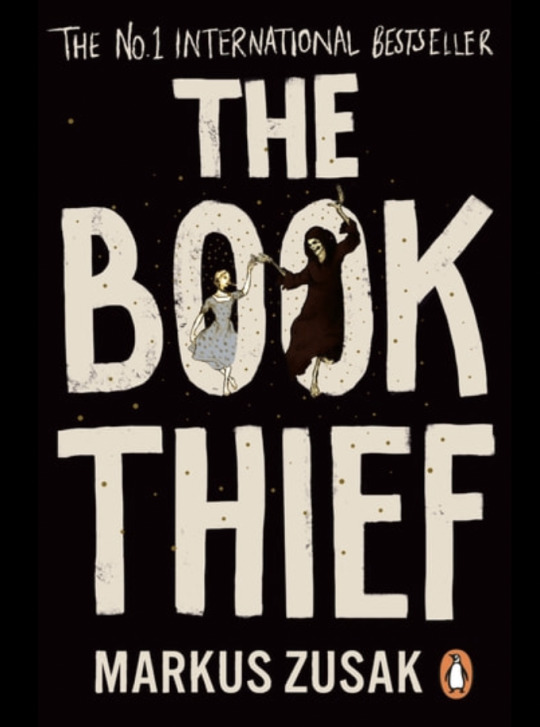
Malibu rising - Taylor Jenkins Reid
Uitgeverij: Ballantine Books
Eerste publicatie: 2021
Seizoen om dit te lezen: zomer
Taylor Jenkins Reid is een best bekende schrijver onder de jeugd. Één van haar bekendste boeken is “the seven husbands of Evelyn Hugo”, maar dit boek is ook best bekend. Ik vind dit zeker een must read voor in de zomer.
Dit boek speelt zich af in Malibu, in California een staat dat in west-Amerika ligt, waar de familie van een arm meisje een restaurant bezit. June heeft veel dromen, maar meest waarschijnlijk kan ze die niet uitbrengen omdat ze het restaurant van haar familie verder moet blijven draaien. Tot op een dag dat ze een bepaalde jongen ontmoet die Mick heet. Die heeft ook grote dromen om artist te worden...
Een hoofdstuk later kom je al meer te weten hoe hun verhaal verloopt tijdens al die jaren. In dit boek worden er twee tijden op dezelfde tijd verteld.
Ik vind dit boek leuk omdat de spanning door heel het verhaal al maar groter en groter wordt. Volgens mij heeft het verhaal een zeer goede plot op het einde.
Ten tweede vond ik het levensverhaal van June zeer interessant, daarmee bedoel ik de evenementen die zij moest meemaken op zo'n jonge leeftijd.
Dit boek bevat daarnaast ook een vervolging van een van de personages die je in dit boek leert kennen (naam van nieuw boek : Carrie Soto is Back). Het boek is pas onlangs uitgekomen.
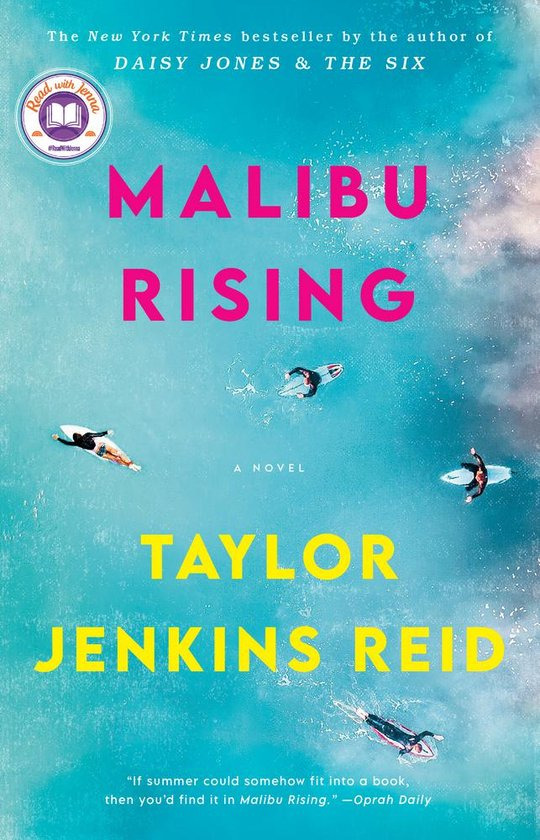
1984 - George Orwell
Uitgeverij: Secker & Warburg
Eerste publicatie: 1949
Seizoen om dit te lezen: herfst/winter
Dit boek is zeer verschillende in vergeleken met mijn twee andere keuzes.
Het boek is fictief maar is gebaseerd op feiten van regimes die je vandaag de dag nog kan vinden. Het gaat hier over een regime dat de mensen de hele tijd controleren. De personages in dit boek hebben geen recht om gevoelens te bevatten, ze mogen niet slecht denken over de Big Brother (hoe het regime wordt genoemd) en mogen zeker en vast vrouw of kinderen hebben. Als je één van deze regels overtreedt en ze betrappen je dan wordt je door de overheid opgesloten en gebrainwashed.
Ik ben dit boek beginnen lezen omdat het al heel lang op mijn lijstje zat, maar dacht dat het niet voor mijn leeftijd was. In het begin vond ik het moeilijk om de context te begrijpen, maar eenmaal ik het begreep las ik de rest van het boek uit in minder dan 3 dagen.
Ik vond het boek in het algemeen al zeer interessant. Maar wat het voor mij meer boeiender maakte, is dat dit boek juist na de tweede wereld oorlog is geschreven. Dat George Orwell al dit dacht over onze toekomstige maatschappij is wel frappant.
Daarnaast vond ik het verhaal zelf heel mooi en leuk geschreven. Ik zat zo diep in het verhaal van het boek dat ik het niet kon neerzetten.

1 note
·
View note